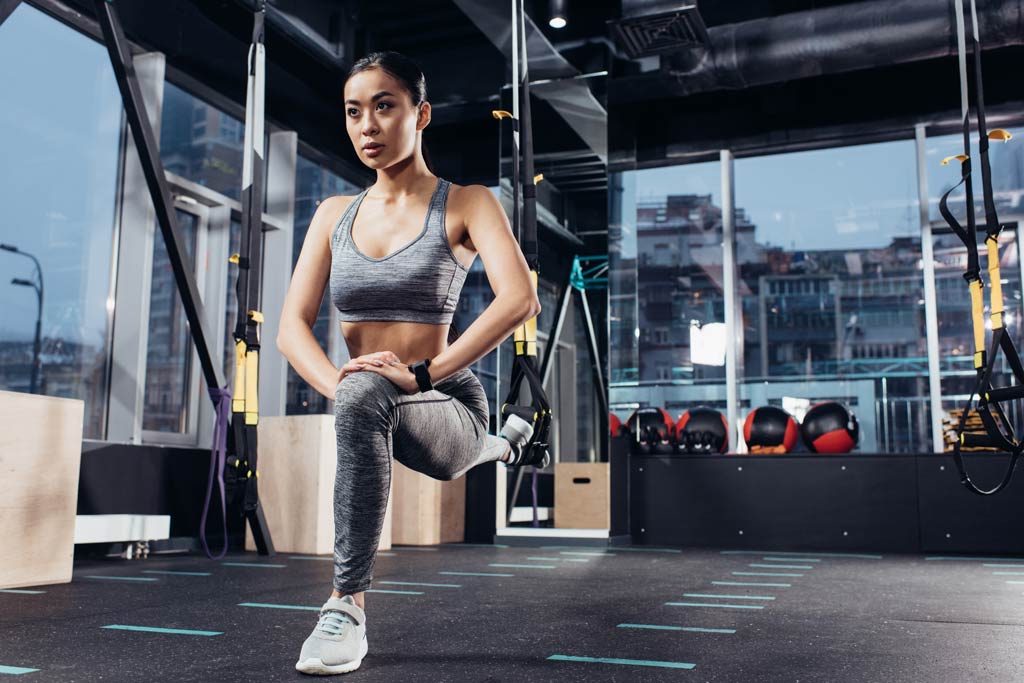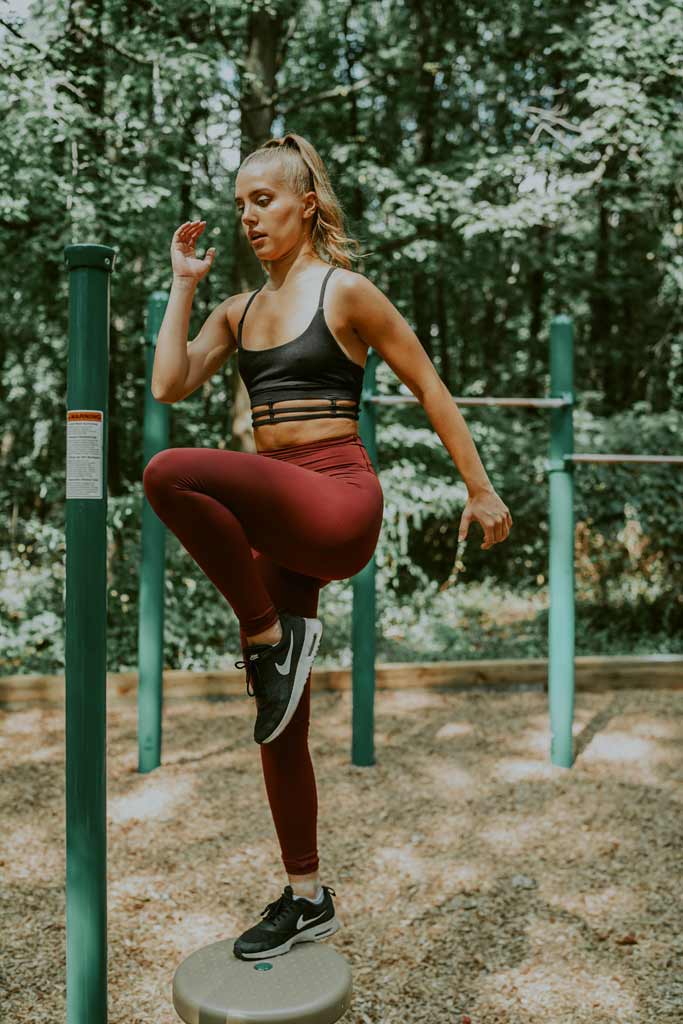Bodyweight supersets are the perfect way to maximize the potential of bodyweight training, or calisthenics.
Because bodyweight exercises usually have less concentrated stress on the muscles, formatting them into supersets (sometimes called couplets) gives you an intense burn while burning maximum fat.
What is a superset?
A superset is two exercises performed back to back with little to no rest between the two.
Basically, there are two types of couplets: those that work the same muscle group, and those that work different muscle groups.
Working the same muscle group.
If you really want to focus on growing strength and size in one muscle group, this is a great way to do it.
Pick two exercises that are different but work the muscle in different ways. For instance, you could do dips and push ups. Both work the chest and triceps, but from different angles and requiring different centers of gravity.
These pairings are great for intense interludes in your workout, or for a nice finisher if you didn’t quite get the burn you wanted during the main workout. However, this is more difficult with bodyweight exercises because there’s less to work with. Also, these types of calisthenics supersets are difficult to sustain for a total workout because burnout happens much faster.
Working different muscle groups.
Therefore, the best types of supersets to build an entire workout around are those that work mostly different muscle groups. These are the bodyweight couplets I’ll be concentrating on in this post.
The beauty of working different muscles is that you can then rest each muscle group while performing the other exercise. This means that in theory you get little to no rest overall, since you’re constantly working, but you still get adequate rest between rounds. (However, yes, you probably will need to rest towards the end.)
The constant exertion will also exhaust your cardiovascular system, giving you an effective, efficient, fat-burning workout.
How do you format a calisthenics workout with bodyweight supersets?
This post may contain affiliate links. Please see my full disclosure here.
You have a few options for workout structures. You can do an AMRAP (As Many Rounds As Possible), setting a countdown timer for a specific amount of time, then doing one of the supersets until the timer runs out. If you do this format, usually called an EDT, stick to no more than 15 minutes. More than that with just two exercises can get very dull. Plus, that might actually be too much volume, putting you at risk for injury.
You can also just do a regular circuit, where you decide how many rounds you want to do and how many reps per round.
HIIT (High Intensity Interval Training) would also work. Set the timer for 10 seconds rest and 50 seconds work for 6 rounds. You’ll then be doing three rounds of the superset, but within a timeframe. Or, if you want a super-quick, super-intense option, try the format I call “4 Minutes of Hell.”
You could also vary the reps each round, doing a ladder, reverse ladder or pyramid structure. With a ladder, the reps go up every round, and with reverse ladder, they go down. A pyramid structure increases in reps and then decreases.
Or, consider having one exercise go up in volume as the other goes down. For instance, round 1 do 10 reps of exercise 1 and 1 rep of exercise 2, then for round 2 do 9 reps and 2 reps, etc.
How many reps and rounds should I do?
The amount of reps and rounds varies according to the format you use, the time you’re doing it in, and your particular abilities.
The constant, however, is the difficulty. You should find the final few reps of the round very challenging by the end of the superset. This means, however, that the rounds might feel easy at the very beginning.
It might take some practice to figure out what volume works best for you. I would suggest starting with a simple workout structure, like an AMRAP. With a higher amount of time, you generally want a lower amount of reps per round. If you’re doing a very short superset (for instance, four minutes), then make the reps higher. This is because you need to reach a place where you feel failure approaching. You don’t need to reach complete failure, but you should feel that the exercise is challenging you.
The amount of reps you do for three rounds shouldn’t be the same amount of reps if you’re doing 10 rounds. You’ll get way too tired too fast, and you’ll lose the effectiveness of the superset structure because you’ll need too much rest.
For instance, if 10 push-ups is difficult at the end of three rounds, then for 10 rounds do less push-ups—perhaps 5. The first few rounds will feel easy, but the work will quickly add up and you should feel challenged by halfway through. By the end, you should be toast—or pretty close to it.
Keep records of how your workout did. Then, adjust.

Worse comes to worst, if your superset is too challenging or too easy, then write it down in your workout journal and adjust your structure next time.
Another option is to change the bodyweight exercise variations. If you’re doing back lunges, for instance, and the workout is too easy, change it up to back lunge and jump up, or a bulgarian jump squat.
Why do bodyweight supersets?
There are a few reasons bodyweight exercises lend themselves to supersets. For one, calisthenics usually requires a high volume of reps, and this is a great way to optimize that high volume for efficiency and enjoyment.
While doing shoulder presses straight for 10 minutes may be more intense, by offsetting it with another exercise, you can manage that intensity for optimum results in a small amount of time. You also gain the benefit of working another muscle group, and you avoid injury from repeating the same movement.
Another reason is the nature of bodyweight training, or calisthenics. It tends to be more of a meditative workout. Calisthenics exercises often require not just strength, but balance and stability, too, which requires a different kind of concentration than weight-lifting. It’s also a perfect opportunity to not just improve form, but to perfect it.
This meditative quality is also true of supersets, I find. Because of the superset structure’s simplicity, you can really dig into the exercises, milk them, perfect them.
But mostly, bodyweight supersets are easy for the “duh” days.
I’ve gone on and on about how much I love bodyweight training, sometimes called calisthenics. Of the nine benefits I found, I forgot an important one: bodyweight workouts are extremely versatile, and it’s very easy to put together a great workout with little thought.
I used to make up my workout right before Ii did it. That way, I could do a workout I wanted to do. I’d be very engaged with it, and it would probably be something I was intuiting that I needed at that time.
With weights, this can take a bit of planning. Not only do you need to check out what weights you have available, if any, but also you need to think about what an appropriate weight would be, and what volume and intensity would work for that weight.
With bodyweight, however, the intensity ramps up slowly and your capacity for a certain volume is more predictable (since the weight is always the same), and it’s easier to just jump into a workout with no prep whatsoever.
And because bodyweight generally carries less effort than weighted workouts on a single rep of an exercise (with notable exceptions), it behooves you to keep the reps high, the rest time low and the body constantly working. That way, you’ll get closer to failure while getting a nice metabolic burn as well. Win-win!
What exercises should I do for bodyweight supersets?

So remember, we want to keep the muscle groups for each of the two exercises separate. There can be some overlap, and most likely there will be, but make sure the main muscle group is different.
This is easy if you want to work the full body in your superset. You can do an upper body exercise and a lower body, like push-ups and jump squats. Easy!
But if you’re doing an upper-body or lower-body workout, it takes a bit of preparation. With bodyweight, we also have some limitations on this because we’re more limited in exercise movements.
Here are some ideas for bodyweight supersets:
Upper body supersets:
- Pull-ups (lats) and push-ups (chest, triceps)
- Pike push-ups (shoulders) and dive bombers (chest, triceps)
- Push-ups (chest, triceps) and back lifts (back)
- Chin-ups (lats, biceps) and diamond push-ups
- Dips (chest, triceps) and Aussie pull-ups (lats)
Lower body supersets: :
- Walking abductions (hip abductors) and banded jump squats (quads, glutes)
- One leg bridges (glutes) and jump squats (quads, glutes)
- Bridge roll-outs (hamstrings, glutes) and step-ups (quads, glutes)
- Jump lunges (quads, glutes) and single leg glute thrusts (glutes, hamstrings)
- Side lunge and jump ups (glutes, hamstrings) and bear crawl fire feet (quads)
- Pistol squats (glutes, quads) and one-leg deadlifts (hamstrings)
As you can see, there is sometimes some overlap, since most lower body exercises are lunges or squats, both of which use the quads and the glutes. However, being large muscles, this can still work effectively.
Full Body supersets:
Yeah, really just take one exercise from each upper body and lower body category above and BAM! You got a great superset!
One suggestion, though: If you are doing an extremely hard exercise, like pull-ups, don’t pair it with an equally difficult exercise. Don’t do pull-ups and pistol squats in one superset unless you’re so advanced you can rock out 10 of each, no problem. Space out the most challenging exercises.
If you’re doing multiple supersets for a workout and you run out of differing muscle groups, consider doing an ab exercise.
Working out with calisthenics supersets.
Because supersets are pretty intense, one couplet can’t last for very long. You don’t want to do just two exercises for 30 minutes, for instance.
Unless you’re a fitness beginner and 10 or 15 minutes is enough for the day, I’d suggest gathering a few supersets to make a complete workout. It’s also really easy to plan and follow, which is a plus if you work out first thing in the morning and your brain hasn’t fired up yet.
For instance:
- 2 AMRAP supersets of 15 minutes each
- 4 supersets of 4 rounds each
- 3 HIIT supersets, each with 12 rounds of 10 seconds rest and 30 seconds of work (10&30×12)
You can’t really go wrong with bodyweight supersets.

As long as you challenge yourself, you can’t really go wrong with bodyweight supersets. While injury is possible, it’s not likely with bodyweight exercises. And it’s a fantastic way to build an effective workout that packs a punch in minimum time. Of course, you need to bring your maximum effort, either way.
Related bodyweight supersets articles:
- How to Burn More Fat With Any Workout
- Why Calisthenics Should Always Be a Part of Your Workout Program
- 11 Ways to Make Exercises Harder (Without Adding Weight)
- How to Structure a Workout 20 Different Ways

